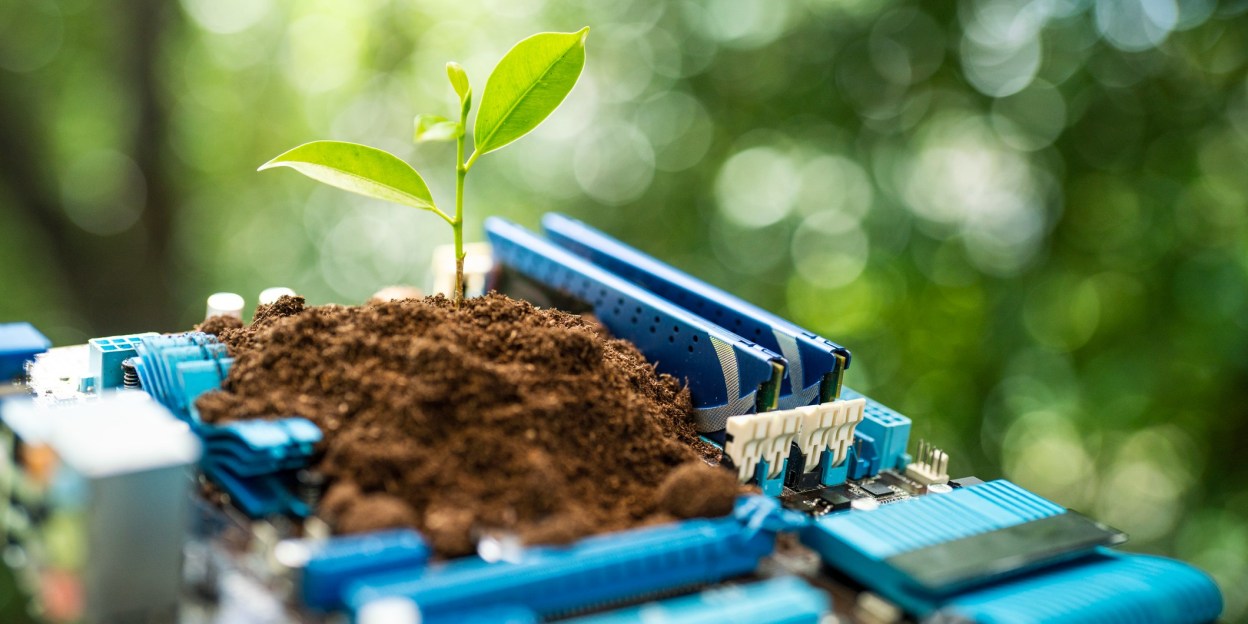Did you know that the 50 million tonnes of e-waste generated every year will more than double to 110 million tonnes by 2050, making it the fastest growing waste stream in the world? It’s an issue that is particularly close to home for those of us living in the UK – we are the second-largest producer of e-waste – commercial and domestic - per capita, generating up to 23.9kg of e-waste per head.[1]
From a domestic waste standpoint, there are various initiatives across the country to help combat the issue. The UK’s largest technology retailer, Currys, recently announced a new ‘Long Live Your Tech’ commitment which aims to tackle e-waste by educating, supporting and helping consumers to make more informed choices when buying and disposing of technology.[2]
The commercial aspect of the problem is a little more complicated. Businesses across the globe are digitally transforming and with that comes the need to balance building the platform for the digital experiences that customers will want tomorrow without throwing out what exists today. There are initiatives popping up to help reuse e-waste such as the Royal Mint recovering gold from electronic waste to use in its coins and bars, expecting to process up to 90 tonnes of UK-sourced circuit boards per week.[3]
But really the responsibility lies with business leaders to try and figure out how to balance the need for digital transformation in the new hybrid world while ensuring that we don’t reach that 110 million figure. In this latest blog for our Down To Earth series, I discuss how our view of the hardware lifecycle should change and why business leaders need to demand greater transparency around disposal or re-use.
End of life doesn’t mean end of use
I had the pleasure to present at tech, film and music festival SXSW in March this year after which I took a question from someone in the audience asking, “what do you do with hardware once it’s been decommissioned? Is there best practice? How do we go about defining a policy?”.
These are exactly the questions all business leaders should be asking because the lifecycle of a device or platform goes beyond the point of decommission. As a company that handles over 20,000 pieces of equipment annually, we are continually looking at how we can extend the life of our equipment through re-use and resale and donation programmes.
When equipment is at the end of its useful life, it is decommissioned and then resold or disposed of, depending on the condition and the value. Some equipment, such as laptops and monitors, are also provided as loaner equipment internally, if they are in good condition.
The key is to work with certified electronics recyclers with industry accepted responsible disposal certifications, like E-Stewards, R2 and ISO (9000, 14000, 450001). They can ensure secure transportation, destruction, and recycling of end-of-life equipment, including secure processing of equipment at the sorting facilities, safe working conditions and proper destruction of media. They also harvest components that can be repurposed, extracting precious metals to be resold and responsible disposal of the remainder materials.
So, when creating your e-waste programme, identify your priorities for how you want your equipment to be handled. Then do your research into trusted and certified electronics recyclers and responsible disposable vendors that reflect those priorities.
Outsourcing the problem
Things become a little more complicated when you consider that many businesses today are making use of hardware that they don’t own. When you are consuming services from a public cloud provider and decide to change what you are using, where does the hardware that supported the old services go? Should you care? How does your consumption of someone else’s hardware fit into your ESG or CSR programme?
The answer is – just because it’s not your technology, doesn’t mean you can’t ask questions about how it is disposed of or reused. Otherwise, you are making your ESG commitments someone else’s problem. As business leaders, you need to ask your cloud providers to be transparent about the lifecycle – even after decommission – of the infrastructure that they’re using.
It's time to reduce and re-think e-waste
Our use of hardware is not going to reduce – in fact, it’s predicted to grow 7.6% in just 2022[4] – so it’s more important than ever that companies put in place achievable, impactful e-waste programmes to do their bit in reducing and re-thinking e-waste.
Remember what Annie Leonard, executive director of Greenpeace USA, said - “there is no such thing as ‘away’. When we throw anything away it must go somewhere”. And it’s our responsibility to make sure it goes to the right somewhere.
This article may contain hyperlinks to non-VMware websites that are created and maintained by third parties who are solely responsible for the content on such websites.
[1] Vanessa Forti, Cornelis Peter Baldé, Ruediger Kuehr and Garam Bel, “The Global E-waste Monitor 2020,” 2020.
[2] Retail Times, “Currys moves nation’s e-waste problem into sharper focus with announcement of a new ‘Long Live Your Tech’ commitment,” March 2022.
[3] Sky News, “Royal Mint to turn electronic waste into gold,” March 2022.
[4] The Business Research Company, “Computer Hardware Global Market Report 2022,” February 2022.


